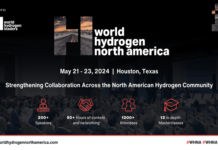The first effluent limitation guidelines update since 1982 is game-changing for many U.S. power plants. This unfiltered look at the rule and its nuances will help you understand how each component affects your plant and presents the five steps you need to take now to be on pace with the compliance timeline.
The U.S. Environmental Protection Agency’s (EPA’s) first update to the Steam Electric Power Generating Effluent Guidelines (commonly called effluent limitation guidelines or ELGs) since 1982 changes the way many power plants will operate in the future. The complex rule, coming in at a staggering 311 pages, covers a lot of ground. But the main focus falls on coal-fired power plants and integrated gasification combined cycle (IGCC) power plant wastewaters.
To grasp the impact of the rule at your plant, it’s important to know the history of the rule and the reasoning behind some of its nuances. That’s the logical start. Next you need to understand the latest update’s six main focus areas and how they apply to your facility. Once you’re up to speed on the rule itself, it’s time to take a hard look at the five steps you need to take now so your plant is ready for compliance, which could be as early as three years down the road.
The Update
It’s been a decade since the EPA first identified the power industry’s ELGs for study and a potential update. And on September 30, 2015, after 10 long years of studying, surveying, and debating, the EPA administrator signed the final ELGs rule for the steam electric power generating point source category and submitted it for publication in the Federal Register. The result? Lots of expected updates and a few surprising changes.
Here’s the brief background of this new rule. The steam electric power generating point source category ELGs rule regulates wastewater discharges from fossil- and nuclear-powered steam generating plants whose primary purpose is to generate electricity for distribution and sale, and that discharge to a surface water body via a National Pollutant Discharge Elimination System (NPDES) permit (direct dischargers) or discharge to a publicly owned treatment works (POTW) via a pretreatment permit (indirect dischargers).
The ELGs are technology-based regulations, which means the limitations set by the EPA under this rule are established based on what is achievable given the implementation of a certain treatment technology the agency selects as a basis.
Although nuclear and combined cycle power plants fall into this ELG category and are subject to this rule, the primary focus of the EPA update is coal-fired power plant and IGCC power plant wastewaters—particularly the wastewaters from these facilities associated with flue gas air pollution control systems or solid waste handling systems. Given that a number of these wastewater sources weren’t commonly used when the rule was last updated 33 years ago, many of these wastewaters were regulated as low-volume wastewaters. Now that these wastewaters are commonplace sources, a major intent of the update is to remove them from the catch-all category of low-volume wastewater and establish separate regulation of each using its own set of limits and treatment technology basis.











































